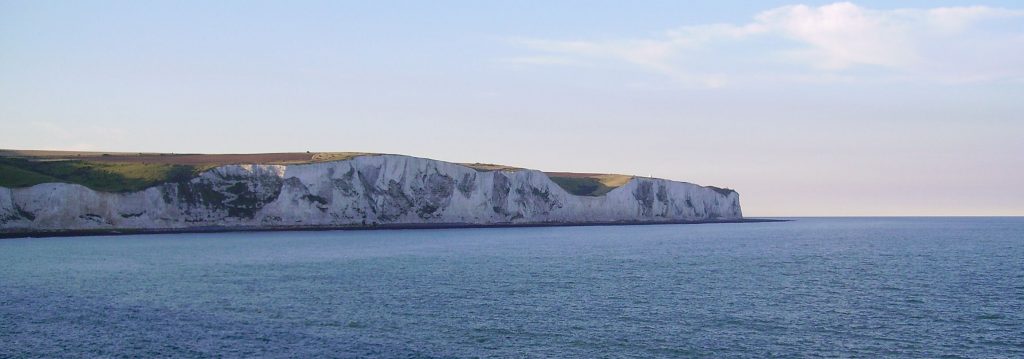At the Concord Consortium our goal is to prepare students to ask questions and use mental models to answer them. Students who develop this habit of mind early on will, we hope, become engaged and scientifically literate adults. And surely they will not lack for important questions to ask!
Here’s an example: According to a recent study published by the National Academy of Sciences, global sea level has increased by more than two inches in this century alone! Why is that happening? People who live on low-lying islands or in coastal cities around the world would really like to know.
Representative Mo Brooks (R-AL), a member of the House Science and Technology Committee and Vice Chair of its Subcommittee on Space, recently proposed a model for this phenomenon. He offered the opinion that a significant cause of the rise in sea level is falling rocks and other erosion, pointing specifically to the California coastline and the White Cliffs of Dover. This debris “forces the sea levels to rise because now you have less space in those oceans because the bottom is moving up,” he explained.
Is he right? Can erosion be causing the rise in sea level? Most important: do you have to be a scientist to address that question?
Actually, anyone can do it. All it takes is a little physics, a little math, and Google.
First, the physics:
- When you throw a rock in the ocean, the volume of the ocean goes up by exactly the volume of the rock because…
- the water displaced by the rock pushes on the surrounding water and ends up being spread evenly across the surface of the ocean (remember, water is a liquid!).
- So the increase in sea level ends up as a thin layer of water—a layer whose volume is equal to that of the rock itself. And the volume of that little layer of water is the vertical rise in sea level times the surface area of the ocean, and that equals the volume of the displaced water, which is just the volume of the rock itself.
Let’s write that up as an equation:
(volume-of-rock) = (surface area of ocean) x (increase in sea level)
Now we need to know the surface area of the ocean. We could estimate it (4/5 of the Earth’s area is ocean, the radius of the Earth is 4000 miles…), or we could Google it.
From Google: The surface area of the Earth’s oceans is 510 million square kilometers.
So to make the sea level rise by one inch we would need to throw in a lot of rocks—or one REALLY BIG rock—whose volume is 1 inch times that surface area. How big is that? Here comes the math!
Let’s put everything in feet, so we can compare. A kilometer is 1000 meters and a meter is about 3.28 feet, so a kilometer is 3280 feet, which makes a square kilometer roughly 10.8 million square feet, which makes 510 million square kilometers, which works out to 5500 million million or 5.5 X 1015 square feet.
So the volume of rock required to raise the ocean level by one inch (1/12 of a foot) is
(5.5/12) X 1015 cubic feet or 0.46 X 1015 cubic feet or 460 trillion cubic feet
How big is 460 trillion? Is it a mountain or a molehill? Turns out, more like a mountain.
Back to Google: The volume of Mount Everest (starting from its base, not from sea level) is 2.1 trillion (2.1 X 1012) cubic feet. So to cause a one-inch rise in sea level you would need to push into the sea
460 / 2.1 = 220 Mount Everests
That’s a lot of rock! Can erosion possibly account for the equivalent of 220 Mount Everests in just a few years? Back to Google…
There’s not a lot of information concerning falling rocks, it turns out, but topsoil erosion is a major concern to a lot of people, so we do know something about that. The European Commission’s Joint Research Centre on Sustainable Resources estimates that 36 billion tons of soil are washed away, worldwide, every year. A cubic foot of rock weighs 150 pounds so all those Mount Everests (2.1 trillion cubic feet’s worth) weigh over 300 trillion pounds. At that rate, it would take almost 9000 years for soil erosion to raise the ocean level by an inch. If rocks and other non-soil debris contributed a similar amount it would still take thousands of years.
The Next Generation Science Standards call for students—and that really applies to all of us!—to learn to use models to answer questions. When we do that it becomes clear that erosion isn’t to blame for the rise in sea level. And the best part? We don’t need to rely on experts, we can figure it out for ourselves!
